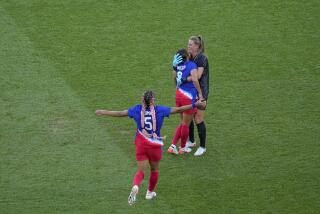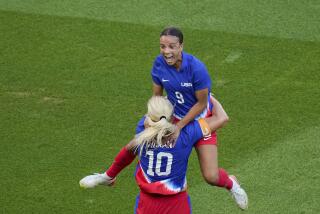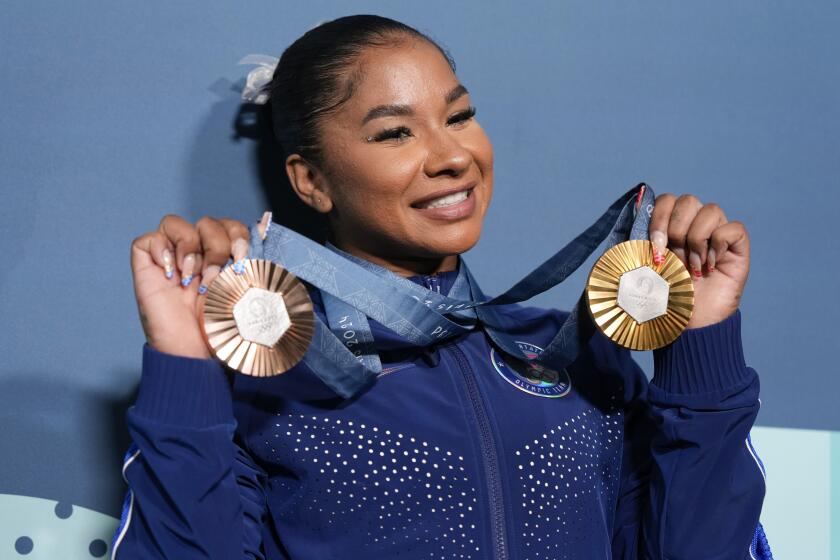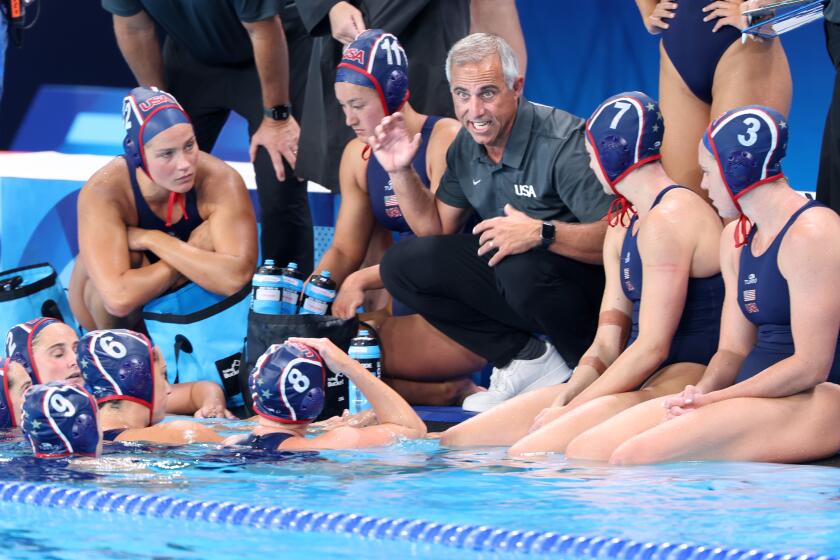U.S. women soccer players get plenty of ink for their accomplishments
You never forget the first time, Sydney Leroux says.
In her case it came when she was just 13, after a bet with her mother over how many goals she would score in a national soccer tournament.
For Shannon Boxx it happened in college — and it, too, came on a dare after she led Notre Dame to an NCAA soccer championship.
Yet for both women their first and subsequent tattoos have become indelible markers of accomplishment on a road each hopes will lead to a gold medal in the London Olympics this summer.
“All of them are meaningful,” says Leroux, whose first tattoo, since covered up, was of a flaming soccer ball. “They’re all worth something to me, and it’s not just something crazy.”
Leroux now has 14 tattoos and counting — including a sprawling three-piece work on her back that features a tree, some flowers and a short poem. Boxx has two, the soccer-playing leprechaun she had put on her hip in college and, on her ankle, a set of Olympic rings adorned with a wreath and the Games motto.
And they’re not the only painted ladies on the U.S. team — but they are the only ones willing to admit it.
“We do have a good amount of people who have at least one,” Boxx whispers. “I don’t want to mention names. But there are people that have tattoos.”
Still, even if you combine the acknowledged body art of Leroux and Boxx with the anonymous works sported by their slightly shyer teammates, it would be something of a blank canvas in comparison with the mobile gallery worn by former national team forward Natasha Kai. She scored the overtime goal that lifted the U.S. over Canada in the quarterfinals of the Beijing Games four years ago.
Kai, who hasn’t wore the U.S. jersey since 2009, had 55 tattoos at last count, starting at her left ankle, running up both arms and legs and ending on the back of her neck — tatts that earned her an appearance on the TLC show “LA Ink” as well as a spread in ESPN the Magazine.
“They’re not quite at her level yet,” midfielder Carli Lloyd says of her teammates.
Nor do they have any desire to get there.
“For me, getting a tattoo is a really big deal. I would never, probably, be somebody that had tattoos all over my body,” Boxx says.
Leroux agrees.
“I actually am running out of space,” says the former UCLA standout, who also has a sparrow, some feathers and her mom’s initials tattooed on her neck and a quote stenciled on one forearm. “I don’t want to touch my arms. And I’m not going to touch my legs. I think I’m going to give it a break for a while. At least until something really cool happens.”
That could come as soon as this summer now that Leroux has survived the final roster cut for the U.S. team, which began its final push toward London with a friendly Sunday against China.
Leroux is among the fastest and is perhaps the most athletic player on the 18-woman Olympic roster, which was released Sunday. Growing up in Vancouver she competed internationally for Canada before moving to Seattle in high school and receiving permission from FIFA to change her allegiance to the U.S.
Leroux ran on a 400-meter relay team that won a Canadian provincial championship. Her parents were both standouts athletes as well, as mother Sandi played third base for the Canadian national softball team, winning a bronze medal in the 1987 Pan American Games. HerU.S.-born father, Ray Chadwick, was a right-hander who pitched eight seasons in the minors and seven games in the majors with the Angels.
But with four forwards — including Abby Wambach and Alex Morgan— playing time could be difficult to come by for the 22-year-old Leroux, the youngest field player on the roster. In addition, she had just nine international caps entering Sunday, by far the fewest on the team.
Conversely Boxx, a 34-year-old midfielder, is among the most experienced players on the team, having played in the last three World Cups and last two Olympics and having started 52 of the U.S.’s 58 matches in the current four-year Olympic cycle.
“We’re already super-excited about it. We’ve had some meetings about the Olympics and that already just starts to feed into it,” says Boxx, who was a four-sport star at South Torrance High. “I’m ready to go. I want to be there now.”
The U.S. women, who open play in the Olympics against France on July 25 — two days before the opening ceremony in London — will be facing enormous expectations this summer. The U.S. has made it to the final in all four of the previous Olympic tournaments for women, winning gold three times. This year’s 12-nation field could be the deepest in Olympic history, featuring not only World Cup champion Japan but seven other teams listed among the top 10 in the FIFA world rankings.
“The pressure is always there,” Boxx says. “That’s because on the U.S. team we have such a competitive nature. We want to win for our country, we want to win for our teammates.
“But we also really understand the importance of the Olympics. We realize just being there is such a great accomplishment.”
Which is why, after her first Games appearance in 2004, Boxx had the Olympic rings drawn in black ink on her ankle, matching the tattoo her sister Gillian got after winning a gold medal in softball in 1996.
“For me, it’s very memorable,” says Boxx, who confessed it was a no-brainer when it came time to decide how she and her sister would permanently mark the accomplishment.
“Tattoos,” she said with a smile. “They last a lifetime.”
More to Read
Go beyond the scoreboard
Get the latest on L.A.'s teams in the daily Sports Report newsletter.
You may occasionally receive promotional content from the Los Angeles Times.







